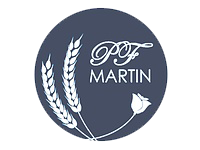To guide your staff because it develops, it helps to know the phases of group growth. Have you ever wondered why it takes a while for a brand new group to hit peak performance? In this article, we focus on the completely different stages of group improvement and the way leaders can information their team through those stages to increase collaboration. The four team growth phases we mapped out present the perfect framework to attaining excessive performing teams. The Norming stage is when teams start to develop shut relationships, and the group demonstrates cohesiveness.

Participants in the coaching will view each state of affairs and identify the protection hazards discovered and the proper action. They will provide answers in an internet quiz and be succesful of transfer at their very own tempo. I keep away from them if I can.” All staff members voice settlement about their reluctance to attend security coaching.
Stage 1: Forming (getting To Know Every Other)
Teams can often cycle again via, especially if conflicts arise, sending them back to Storming. If groups want to keep in the Performing stage, they should repeatedly https://www.globalcloudteam.com/ work on constructing belief and enhancing communication. After the preliminary stage, teams often enter the storming stage, which entails conflict and disagreement.
Each stage of staff improvement presents its own particular challenges to a gaggle of individuals striving to work together efficiently by forming a well-oiled group. By figuring out where they’re at, the staff and the organization can take specific actions at each stage of team growth to help the team’s success in accomplishing the group mission. The group meets and learns about the opportunities and challenges, after which agrees on goals and begins to deal with the tasks. They could also be motivated however are usually relatively uninformed of the problems and goals of the group. Team members are often on their best conduct but very focused on themselves.
In the earlier levels of your team’s formation, establish a clear communication plan. A communication plan is a prime degree view of how your staff is going to communicate important data to key stakeholders. Clarity on the varied avenues of communication allows group members to successfully get work carried out, understand their roles, and know the place to search out the data they need about work.
Norms become a method of simplifying decisions and facilitating collaboration, since members have shared expectations about how work will get carried out. At this stage, staff leaders can begin delegating duties simply and seeing development within their teams. Team leaders want to make sure they address any main modifications to scale back the potential for digressing to earlier stages. Anticipating staff effectivity could be tough, but understanding the wants of the people that comprise the groups allow leaders to maintain their team at peak performance. This is why it may be very important understand the fact that teams develop and mature over a time period. Knowing the place your group is at present in can help you perceive tips on how to work via your present challenges and get to the subsequent stage.
Phases Of Staff Development
Tuckman’s basis helps team leaders understand how team dynamics change as a project progresses. By understanding the five levels of group development, you’ll find a way to help your group as they’re attending to know each other to quickly allow collaboration and effective teamwork. Successfully moving through the storming stage signifies that a team has clarified its function and its technique for attaining its objectives. It now transitions to a interval centered on developing shared values about how team members will work collectively.
No matter what sort of team you’re forming, you probably shouldn’t expect its members to immediately bond and quickly reach the extent of a high-performing team. This is also the time in which teams can celebrate everything they’ve achieved together. Take the time to reflect on your achievements and remind your group why they’re doing what they do. This can be a fantastic alternative to recognize and praise the talents of particular group members. This is the stage when issues begin to settle down as your team finds their groove.
Rethinking The ‘forming, Storming, Norming, Performing’ Paradigm
If you could have ever been on a team, you’ve in all probability seen its fair proportion of ups and downs. All groups undergo their high intervals and low periods — it’s part of the pure development and improvement of teams. But likelihood is that even in case you have experienced the high four stages of group development and low durations of teams, you won’t know exactly what they imply or why they happen. Bruce Tuckman outlined these 4 stages of group improvement as Forming, Storming, Norming, and Performing. Bruce Tuckman, collectively with Mary Ann Jensen, added the adjourning stage to describe the ultimate stretch of a team’s work collectively.
- Bruce Tuckman defined these four phases of staff improvement as Forming, Storming, Norming, and Performing.
- You may even be succesful of flip over a number of the day-to-day management to a group member.
- Each stage of group growth presents its personal special challenges to a group of people striving to work together successfully by forming a well-oiled group.
- If managed correctly, the storming phase can truly make groups stronger after they come out of it.
- There is little intervention wanted from leadership at this stage, but it is essential to continue providing help where needed to stop the team from lapsing back into the storming stage.
To capitalize on FireFly Facilitation’s skilled team growth providers and innovative methods, contact FireFly Facilitation and begin developing your high-performance group right now. At the Performing stage, the groups have turn into a cohesive and effective staff.
Storming
Your staff members are taking themselves and one another critically. They have moved past understanding variations to valuing them and leveraging individual strengths. At this level, management can shift amongst staff members and is versatile to the scenario at hand. In addition to establishing your team’s mission or goal, it’s also important to set roles for individual staff members. As you add people to the team, take observe of what qualities and expertise you’ll need to complete the project.
Teams can do that via creating an open and trustworthy setting where everyone seems to be revered. However, some groups experience such a robust Storming stage that they are unable to maneuver previous it. Simply put, being able to recognize your team’s current stage will allow you to higher cater to your team and, if you’re the group chief, to make them the shared targets.
For instance, a change in management could cause the staff to revert to storming as the new people challenge the present norms and dynamics of the group. « With group norms and roles established, group members concentrate on reaching frequent goals, often reaching an unexpectedly excessive degree of success. »[4] By this time, they’re motivated and educated. The group members are actually competent, autonomous and in a place to deal with the decision-making course of without supervision. Dissent is predicted and allowed so lengthy as it is channelled via means acceptable to the team.
Whilst responding to the completely different phrases, remember that they are constantly repeating as your teams develop. Whenever you discover there’s a want to change or an actual change from the traditional means of working, it will set off the team to maneuver into the storming and even forming stage. Little drops in performance before they mud themselves off and start working together nicely again.
A generally used framework for these stages was developed within the mid 1960’s by Bruce W. Tuckman. His descriptions of Forming, Storming, Norming and Performing present a helpful framework for taking a glance at your individual teams’ efficiency. During this stage, it’s essential to write down targets and assignments to get rid of ambiguity. It’s also necessary to carry regular status checks, to assess progress, determine where people are stuck, present help, and provides regular effective feedback. For the leader, it’s equally important to ask for feedback and demonstrate openness to receiving it, acknowledging its worth, and appearing on it.
It’s upon reaching this stage that a team can turn out to be high performing. Members will typically be enthusiastic about their work and find satisfaction in the outcomes. They’ll also belief one another and interact with a excessive degree of openness. Best of all, teams at this stage will largely have the flexibility to handle themselves, resolve their very own conflicts and act collectively, as a whole. You might even have the ability to flip over some of the day-to-day leadership to a staff member.
Members on the staff belief one another and the structure is strong. Because of their energy, the group wants little supervision, and members all work collectively to make the best decision and transfer towards their goals. At the Performing stage, managers should keep encouraging team decision-making and drawback fixing because the group members have the data, experience, and belief in one another. When a model new team types, its members are unsure about its purpose and goals.
